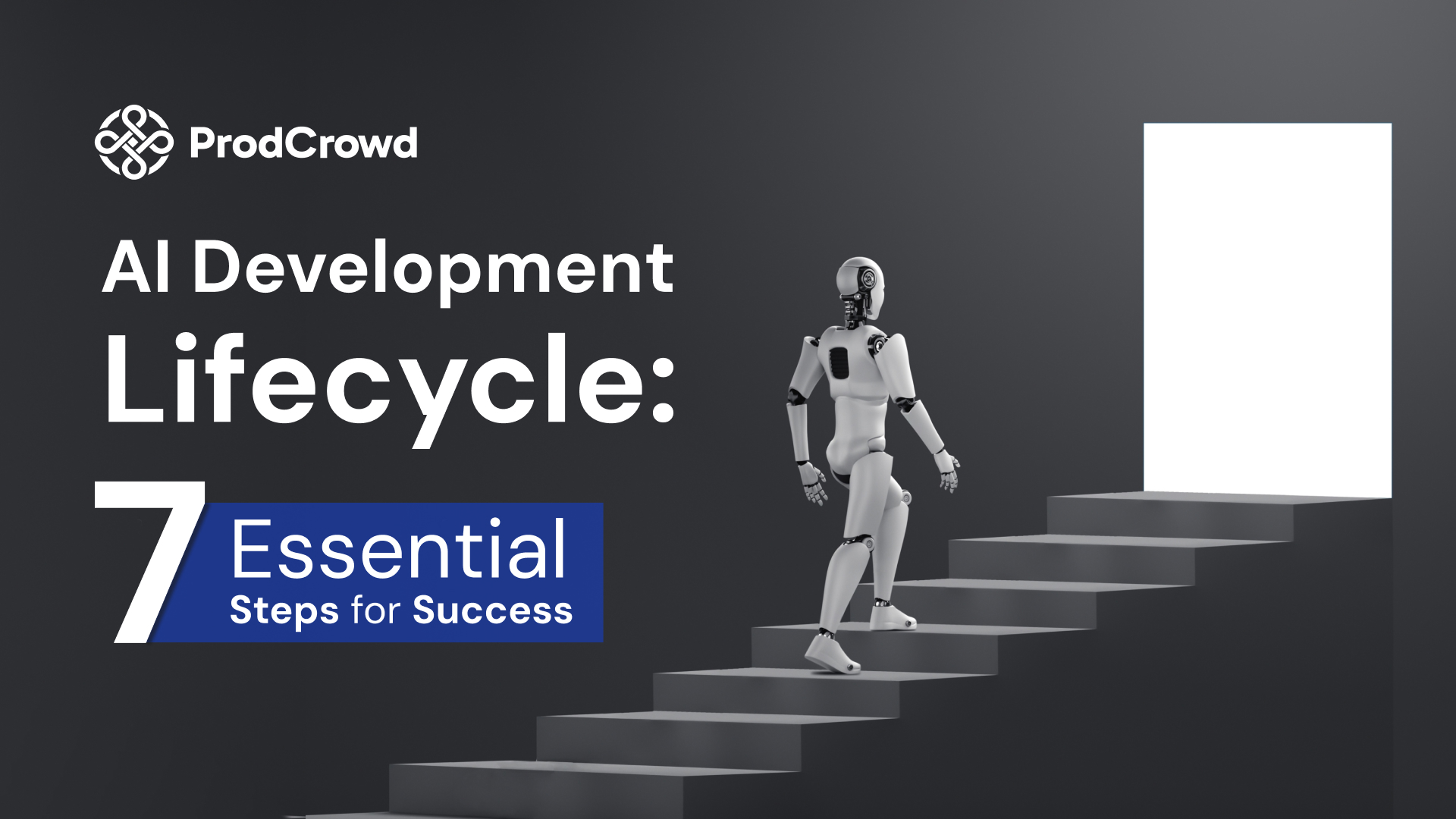Artificial Intelligence (AI) is transforming industries at a rapid pace, but building a successful AI solution requires more than just algorithms and data. Organizations need a structured AI development lifecycle to ensure every step is carefully planned, executed, and optimized for business outcomes.
In this blog, we’ll walk through the 7 essential steps of the AI development process—from strategy to deployment—so you can unlock the full potential of AI in your business.
Step 1: Define Business Goals & AI Strategy
The journey starts with clarity. Before jumping into technical development, businesses must identify what problem AI will solve and how it aligns with larger organizational objectives.
For example:
- Are you looking to improve customer experience with AI-powered chatbots?
- Do you want predictive analytics for smarter decision-making?
- Or are you aiming to automate repetitive workflows?
A strong AI strategy ensures that your investment drives measurable results. Many businesses partner with an experienced AI innovation partner like ProdCrowd to define use cases, prioritize opportunities, and design a roadmap.
Step 2: Data Collection & Preparation
Data is the fuel that powers AI. Once the problem is defined, the next step is to collect, clean, and prepare data.
This includes:
- Identifying reliable data sources
- Removing inconsistencies or duplicates
- Normalizing and labeling data for training
Without high-quality data, even the most advanced algorithms will fail to deliver meaningful insights.
Step 3: Choose the Right AI Tools & Frameworks
From TensorFlow, PyTorch, and Scikit-learn to cloud-based solutions like AWS AI or Azure ML, selecting the right tools is crucial. The choice depends on:
- Type of AI solution (NLP, computer vision, predictive analytics, etc.)
- Scalability requirements
- Integration with your existing systems
The right technology stack ensures faster development and smoother deployment.
Step 4: Model Development, Training & Evaluation
At this stage, data scientists and AI engineers build and train the machine learning models. Multiple algorithms may be tested to identify which delivers the highest accuracy.
Key tasks include:
- Splitting data into training, validation, and testing sets
- Iteratively improving the model with feature engineering
- Evaluating performance metrics like precision, recall, and F1-score
For businesses that need rapid prototyping and experimentation, AI Research-as-a-Service (RaaS) helps accelerate model development while minimizing upfront costs.
Step 5: Integration with Business Processes
A powerful AI model is only useful if it’s seamlessly integrated into your workflows, applications, or customer-facing platforms.
Examples:
- Embedding AI chatbots into customer support systems
- Adding predictive analytics to sales dashboards
- Integrating AI-based fraud detection into financial transactions
Integration ensures your AI solution generates real business impact.
Step 6: Deployment & Scaling
Once tested, the AI solution is deployed into production. Cloud platforms, edge devices, or on-premise servers may be used depending on business needs.
Scaling also comes into play—how will the AI handle larger datasets, more users, or real-time decision-making? Automated monitoring and retraining pipelines ensure the system adapts as data evolves.
Step 7: Continuous Monitoring & Optimization
The AI development lifecycle doesn’t end at deployment. AI models degrade over time due to changing data patterns (known as “model drift”). Continuous monitoring is critical to:
- Track accuracy and performance
- Retrain models with new data
- Optimize for better efficiency and reduced costs
Regular updates ensure the AI solution remains relevant and reliable.
Final Thoughts
The AI development lifecycle is not a one-time project—it’s a continuous process of strategy, innovation, and refinement. By following these seven steps, businesses can transform raw data into powerful AI-driven solutions that deliver measurable impact.
Whether you’re just beginning your AI journey or looking to scale existing solutions, partnering with an experienced team like ProdCrowd ensures you stay ahead of the curve with the right strategy, tools, and execution.
Frequently Asked Questions (FAQs)
1. What is the AI development lifecycle?
The AI development lifecycle is a structured process that includes defining goals, preparing data, building models, integrating solutions, deploying, and continuously optimizing AI systems.
2. Why is data preparation important in AI?
Data preparation ensures your AI model is trained on clean, consistent, and relevant datasets, which directly impacts accuracy and reliability.
3. How long does it take to develop an AI solution?
The timeline depends on complexity. Simple AI prototypes may take weeks, while enterprise-grade AI systems can take several months to fully develop and deploy.
4. Can AI solutions be customized for specific industries?
Yes. With the right AI development lifecycle, solutions can be tailored for industries like healthcare, finance, retail, real estate, and more.
5. How do I ensure my AI model stays accurate over time?
Continuous monitoring, retraining with new data, and performance evaluation are essential to keep AI solutions accurate and effective.

